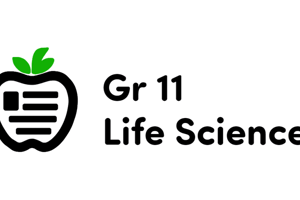Podcast
Questions and Answers
What is the primary difference between respiration and breathing?
What is the primary difference between respiration and breathing?
- Breathing is synonymous with cellular respiration.
- Respiration is a purely mechanical process.
- Breathing involves biochemical reactions in cells.
- Respiration encompasses both mechanical and biochemical processes. (correct)
How does gaseous exchange occur in plants?
How does gaseous exchange occur in plants?
- By diffusion directly through the plant's cellular walls.
- Via stomata and air spaces within the mesophyll. (correct)
- Through specialized gas exchange organs found in roots.
- Only through the cuticle present on their epidermis.
Which of the following correctly defines aerobic respiration?
Which of the following correctly defines aerobic respiration?
- A mechanism that generates ATP independently of oxygen.
- A process using oxygen for complete oxidation of food material. (correct)
- A reaction that involves partial oxidation of glucose.
- A process that only produces water with no energy generated.
What role do stomata play in plant physiology?
What role do stomata play in plant physiology?
What happens to the carbon dioxide produced during cellular respiration?
What happens to the carbon dioxide produced during cellular respiration?
What is the main role of mesophyll cells in a leaf during the daytime?
What is the main role of mesophyll cells in a leaf during the daytime?
How do leaf cells manage gas exchange at night?
How do leaf cells manage gas exchange at night?
What is the function of lenticels on woody stems and mature roots?
What is the function of lenticels on woody stems and mature roots?
Which statement accurately describes the gas exchange process in aquatic plants?
Which statement accurately describes the gas exchange process in aquatic plants?
What distinguishes lenticels from the surrounding bark on woody stems?
What distinguishes lenticels from the surrounding bark on woody stems?
Flashcards are hidden until you start studying
Study Notes
Cellular Respiration and Gaseous Exchange
- Cellular respiration generates ATP by oxidizing C-H bonds in food, producing carbon dioxide and water.
- Aerobic respiration occurs with oxygen, leading to complete oxidation of food materials.
- Gaseous exchange refers to the uptake of oxygen and the release of carbon dioxide in organisms.
- Breathing is the mechanical process of taking in air to obtain oxygen and expelling carbon dioxide, distinct from respiration, which includes biochemical processes.
Gaseous Exchange in Plants
- Plants lack specialized organs for gaseous exchange; every cell directly interacts with the environment.
- Stomata on leaves and stems facilitate gas exchange.
- The mesophyll cells and air spaces in leaves promote efficient gas movement.
- During the day, plants simultaneously perform photosynthesis and respiration, utilizing oxygen produced during photosynthesis and carbon dioxide generated in respiration.
- At night, when photosynthesis halts, leaves absorb oxygen from the environment and release carbon dioxide.
Stomata and Lenticels
- Stomata consist of pores on the leaf's epidermis that open and close to regulate gas exchange.
- Lenticels are small pores on woody stems and mature roots, enabling gas exchange despite the bark's impermeability.
- Gases diffuse through lenticels, allowing external air to enter and exit the stem.
- Aquatic plants absorb dissolved oxygen from water and release carbon dioxide back into it.
General Notes
- The cuticle on young stems and leaves allows limited gas exchange.
- The structure and functioning of stomata and lenticels play crucial roles in maintaining the balance of gases necessary for plant survival.
Studying That Suits You
Use AI to generate personalized quizzes and flashcards to suit your learning preferences.




